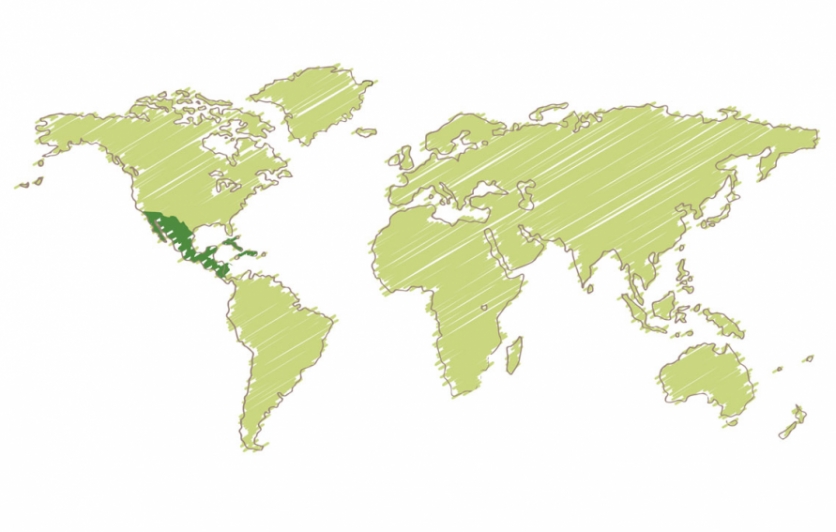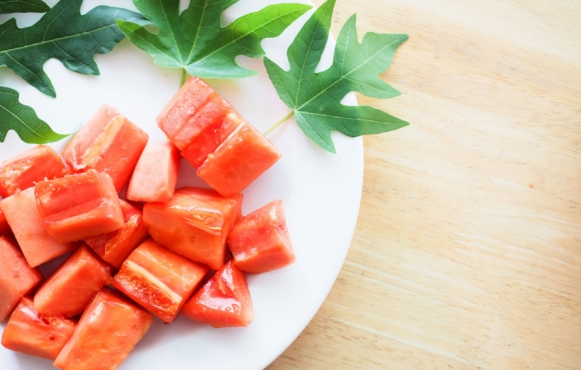Caribbean, Mexico and Central America

Guacamole, rice and beans, cassava bread, yuca con mojo, mofongo, corn tortilla – many of South Florida’s beloved dishes wouldn’t be possible without creamy avocados, myriad beans, starchy roots and the versatile peppers that come from these regions. And let’s not forget the birthplace of cacao, source of one the world’s favorite flavors: chocolate!
Foods from the Caribbean, Mexico and Central America
AVOCADO (Persea americana), used extensively in Mexican cuisine, comes in three “races” – West Indian/Antillean, Guatemalan and Mexican. Florida’s green-skinned varieties are Antillean and hybrid. They’re rich in oil, potassium, magnesium and vitamins D and A.
BEANS (Phaseolus vulgaris) include many cultivars and varieties, including pinto, black, red or kidney, all staples throughout Mexico, Central America and the Caribbean. Beans are low in fat and highly nutritious, and when combined with nuts, seeds or grains, form a complete high-fiber vegetable protein.
CASSAVA or YUCA (Manihot esculenta) was domesticated thousands of years ago in Brazil and Central America, spread throughout the Caribbean, and was introduced to Africa and Asia in the 16th century. Its edible starchy roots make cassava a major staple food throughout the world.
CACAO (Theobroma cacao) was cultivated and used throughout Mexico and Central America for thousands of years before it was introduced to the Spanish in the sixteenth century, and it spread throughout Western Europe shortly after. Cacao pods contain seeds, commonly called beans, that are fermented, dried and processed to make chocolate and cocoa.
CHILE PEPPERS (Capsicum annuum, C. frutescens, C. chinense) are among the oldest cultivated crops in the Americas, encompassing a wide variety of shapes, colors and degrees of heat.
CORN or MAIZE (Zea mays), classified as an annual grass in the family that includes wheat, barley, rice and sugarcane, is believed to have been domesticated in southern Mexico, then spread throughout the Americas.
PAPAYA (Carica papaya), native to Mexico and northern South America, is a fast-growing plant with fruits (actually large berries) filled with edible seeds. The red or orange flesh contains papain, a meat-tenderizing enzyme.
SWEET POTATO and BONIATO (Ipomoea batatas), domesticated in the Americas thousands of years ago, made their way to Polynesia, the Philippines and Okinawa and became a common food crop in tropical and warm temperate regions. The white-fleshed boniato is a cultivar grown in the Caribbean.
Did you know that you can eat the greens from sweet potatoes and boniato? At Grow2Heal, we also harvest these mildly flavored leaves. They’re rich in vitamins K and A. Sauté them like spinach, add to stir-fries, chop and add to salads.
Make It Yourself
Communities Near You
What’s happening near you
Visit Lauderdale Food & Wine Festival returns January 13-19, 2025
Las Olas Oceanside ParkFort Lauderdale







